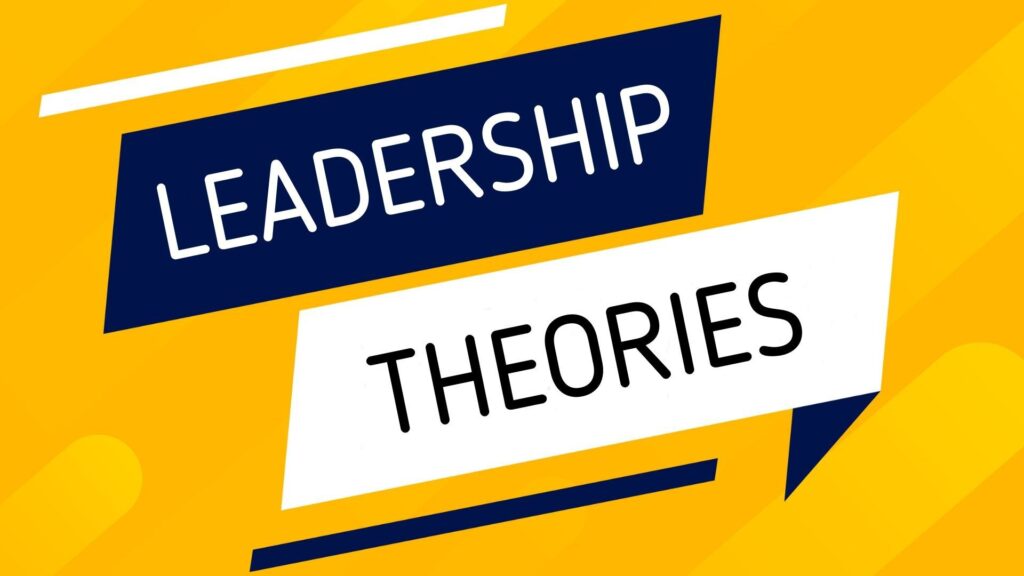Table of Contents
ToggleLEADERSHIP THEORIES
Interest in leadership increased during the early part of the twentieth century. Early leadership theories focused on what qualities distinguish between leaders and followers, while subsequent theories looked at other variables such as situational factors and skill level.
While many different leadership theories have emerged, most can be classified as one of five major types:
- Great Man Theories.
- Trait Theories.
- Behavioral Theories.
- Contingency Theories.
- Fiedler’s Least Preferred Co-worker (LPC) Theory
- Path-Goal
5. Situational Theories.
- Hersey and Blanchard’s Situational Theory
- House’s Path Goal Theory
- Leader Participation Model
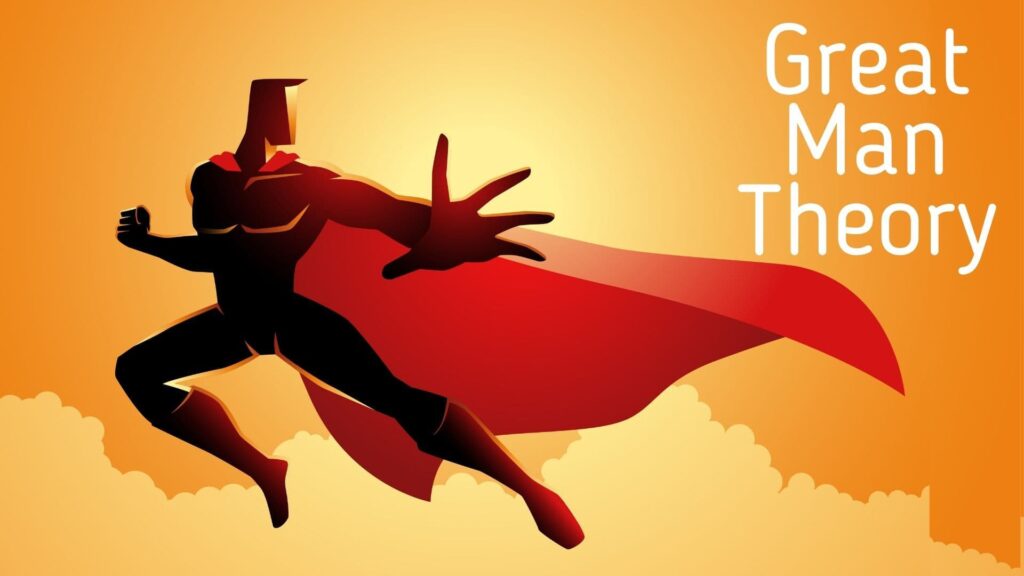
Great Man Theory
This theory is associated with the historian Thomas Carlyle and was introduced in the 19th century (1840s) when history was believed to be primarily shaped by the influence of extraordinary individuals or heroes, suggesting that great leaders are inherently born, not made.
- Carlyle significantly shaped this leadership theory, once expressing that, “The history of the world is essentially the collective biographies of great men.” In his work “On Heroes, Hero-Worship, and the Heroic in History,” he drew comparisons among various heroes.
- This theory was called “great man” because it focused on identifying the innate qualities and characteristics possessed by great social, political, and military leaders.
- According to this theory, capacity for leadership is inborn, that is, a person is a natural born leader. These born leaders are highly influential individuals, gifted with divine inspiration and the right characteristics like charisma, intelligence, wisdom, political skills etc. with a capability to have a decisive historical impact.
- According to the great man theory of leadership, leadership calls for certain qualities like commanding personality, charm, courage ,intelligence, persuasiveness and aggressiveness.
Assumptions of Great Man Theory
The Great Man Theory centers on two main assumptions:
- Great leaders are born possessing certain traits that enable them to rise and lead. The theory assumes that the traits of leadership are intrinsic. That simply means that great leaders are born… they are not made. This theory sees great leaders as those who are destined by birth to become a leader.
- Great leaders will arise when there is a great need. The belief was that great leaders will rise when confronted with the appropriate situation.
Criticism: Herbert Spencer, a noted philosopher, sociologist, biologist and political theorist of the Victorian era, countered that the Great Man Theory was childish, primitive and unscientific. He believed leaders were products of their environment or the society in which they lived. He advocated that before a “great man” can remake his society, that society has to make him.
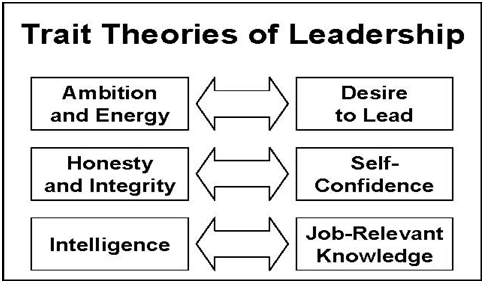
Trait Theory
Trait Theories assume that some people have certain characteristics or personality traits that make them better leaders than others.
- Similar in some ways to “Great Man” theories, trait theory assumes that people inherit certain qualities and traits that make them better suited to leadership.
- Trait theories often identify particular personality or behavioral characteristics shared by leaders.
- But if particular traits are key features of leadership, how do we explain people who possess those qualities but are not leaders? This question is one of the difficulties in using trait theories to explain leadership.
The trait theory is based on the great man theory, but it is more systematic in its analysis of leaders. Like the great man theory, this theory assumes that the leader’s personal traits are the key to leadership success.
Leadership Traits include;
Ambition and energy | Honesty and integrity | Intelligence |
The desire to lead | Self-confidence | Job-relevant knowledge |
Leadership Skills include;
Clever (intelligent) | Honesty and integrity | Intelligence |
Diplomatic and tactful | Conceptually skilled | Creative |
Knowledgeable about group task | Fluent in speaking | Socially skilled |
Assumptions of Traits Theory
- People are born with inherited traits.
- Some traits are particularly suited to leadership.
- People who make good leaders have the right (or sufficient) combination of traits.
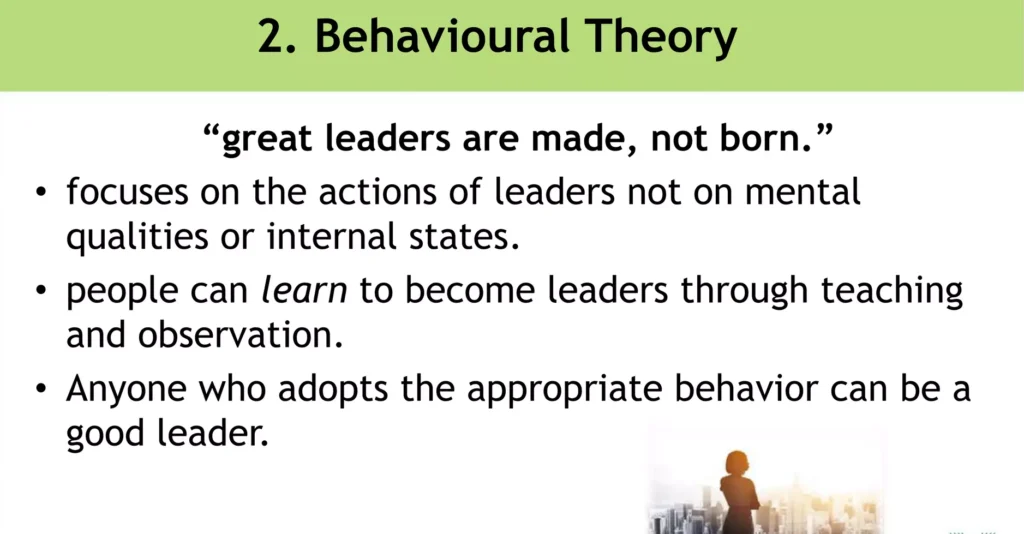
Behavioural Theory
In contrast with trait theory, behavioral theory attempts to describe leadership in terms of what leaders do, while trait theory seeks to explain leadership on the basis of what leaders are.
- Leadership according to this approach is the result of effective role behaviour. Leadership is shown by a person’s acts more than by his traits.
- It suggests that effective leadership can be learned through observation, imitation, and reinforcement. Behavioral theories identify two main leadership styles: task-oriented (focused on achieving specific goals) and people-oriented (focused on building relationships and supporting team members).
- Theory proposes that specific behaviors differentiate leaders from non leaders.
- Behavioral theories of leadership are based upon the belief that great leaders are made, not born.
- Rooted in behaviorism, this leadership theory focuses on the actions of leaders, not on mental qualities or internal states.
- According to this theory, people can learn to become leaders through teaching and observation.
- Successful leadership is based in definable, learnable behaviour.
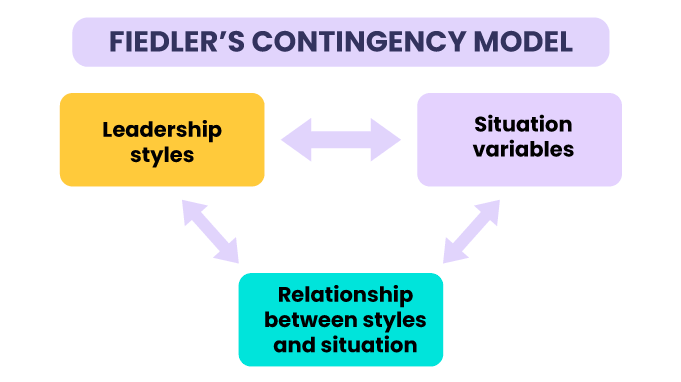
Contingency Theories
According to this theory, no leadership style is best in all situations. Success depends upon a number of variables, including the leadership style, qualities of the followers, and aspects of the situation. For example, an authoritarian style might be most appropriate in a situation where the leader is the most knowledgeable and experienced member of a group. In other instances where group members are skilled experts, a democratic style would be more effective.
There are basically three steps in the model;
- Identifying Leadership Style: Fiedler believes a key factor in leadership success is the individual’s basic leadership style, So he created the Least Prefer Co-worker (LPC) Questionnaire . LPC:-An instrument that tells to measure whether a person is task or relationship oriented. Low LPC score(57 or less) means task oriented, high LPC score(64 or above) means relationship oriented.
- Defining the Situation: Fiedler identified three contingency dimensions that define the key situational factors, i.e Leader-member relations, Task structure and Position Power.
- Matching leaders and situations: After knowing the leadership style through LPC and defining all the situations, we will choose the leader who will fit for the situation. Two ways in which to improve leader effectiveness, 1. Change the leader to fit the situation or 2. Change the situation to fit the leader
Several contingency approaches were developed concurrently in the late 1960s, such as the Path-Goal Theory (1971) and the Vroom and Yetton’s DecisionMaking Model (1973).
- Path-Goal theory was developed by House (1971) to describe the way that leaders encourage and support their followers in achieving the goals they have been set by making the path that they take clear and easy. According to the Path-Goal Theory, an effective leader guides his employees to help them attain shared goals: he or she supports employees in order to ensure that their goals and collective goals coincide (Langton & Robbins, 2007).
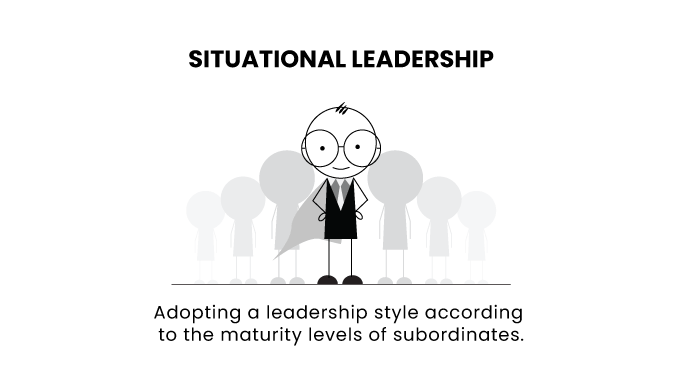
Situational Theories
Hersey and Blanchard (1977), developed a Situational theory of leadership. Situational theories propose that leaders choose the best course of action based upon situational variables. Different styles of leadership may be more appropriate for certain types of decision making. These theories emphasize the importance of leaders being able to adapt their style and approach to different circumstances in order to be successful.
Such Factors are:
- Consider the Relationship: Social and interpersonal factors between leaders and group members.
- Consider the Task: The nature and complexity of the task.
- Consider the Level of Authority: The leader’s power and influence over group members.
- Consider the Level of Maturity: The maturity level of each individual group member
Then choose the best leadership style appropriate.
- Telling (S1): The leader tells people what to do and how to do it.
- Selling (S2): This style involves more back-and-forth between leaders and followers. Leaders “sell” their ideas and message to get group members to buy into the process.
- Participating (S3): The leader offers less direction and allows group members to take a more active role in coming up with ideas and making decisions.
- Delegating (S4): This style is characterized by a less involved, hands-off approach to leadership. Group members make most of the decisions and take most of the responsibility.
An example of situational leadership would be a leader adapting their approach based on the needs of their team members. One team member might be less experienced and require more oversight, while another might be more knowledgeable and capable of working independently.

